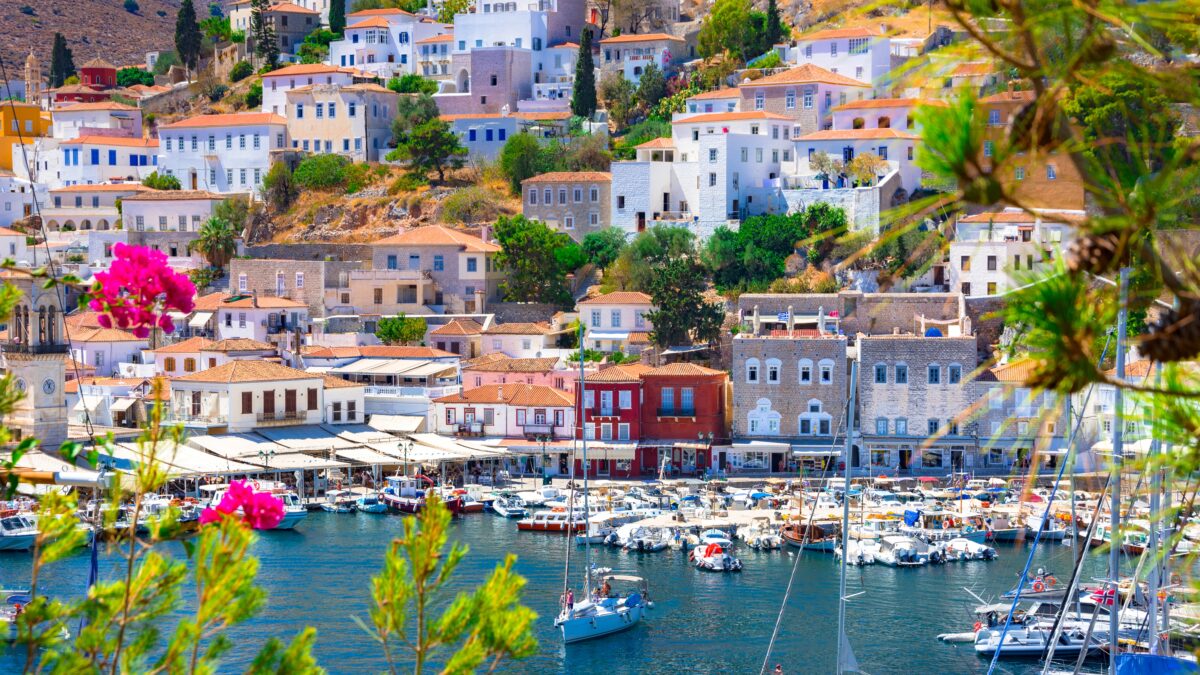Hydra is an island in the Saronic Gulf, located a short distance from Athens. More specifically, all it takes is a short, one-and-a-half-hour ferry ride to find yourself in a place that seems taken directly out of an old film. Hydra has no shortage of history and culture. During the 19th century it was a major commercial and maritime centre and played a decisive role in the Greek Revolution of 1821. The island’s naval forces contributed immensely to Greece’s struggle for freedom, and it has been associated with prominent revolutionary figures such as Kolokotronis and Andreas Miaoulis. In honour of the island’s maritime history, the ‘Miaouleia’, a traditional event, is held here. Hydra also exhibits a striking architectural style. Houses, manors and captains’ residences on the island are invariably gorgeous, well-preserved buildings with stone façades and tiled roofs, a true blend of beauty and elegance. There are no cars on the island, and transportation is limited to donkeys and wagons, offering visitors a unique opportunity to explore its winding cobblestone paths on foot.
Visits to the island start at the port. Pavlos Kountouriotis street, the main coastal road, starts from there and leads to the statue of admiral Miaoulis. Nearby is the island’s Cathedral, the Church of the Dormition of the Theotokos, which serves as an art museum. Impressive manors dot the island, most prominent of which are those of Pavlos & Lazaros Kountouriotis, Voulgaris, and Tompazis. Hydra has deep cultural roots, boasting museums with much for visitors to admire. Kiafa, the island’s oldest neighbourhood, dates to the 15th century and offers stunning views.
The most famous beach on Hydra is the rocky Spilia, beneath Hydroneta and Periptero. Kaminia beach, near its namesake settlement, is also a popular destination. Lovers of hiking should not miss the opportunity to explore the trail that leads to Profitis Ilias; it is a truly one-of-a-kind experience.
Cuisine
The fishing-focused cuisine of Hydra reflects Hydra’s island tradition. Fresh fish and seafood, especially the excellent local calamari, cuttlefish and octopus, form the basis for many of the island’s recipes. They are usually served with orzo, cooked in their own ink or grilled. The variety of local pies on Hydra is limited, but the island’s own spin on pie with greens is especially tasty and enduringly popular. The island’s famous handmade pasta, known as gogles (and similar to Evia’s kourkoubines) often accompanies the local dishes or is served on its own, with a number of recipes dedicated to it. As for meat-based dishes, cubed veal stifado is a popular choice.
Beyond the fruits of the sea, Hydra is known for its almond sweets, kourabiedes, sugar baklava, skaltsounia, achladakia and local fritters, known here as lalaggites.
How to get there
Hydra is serviced by ferry from Piraeus.










